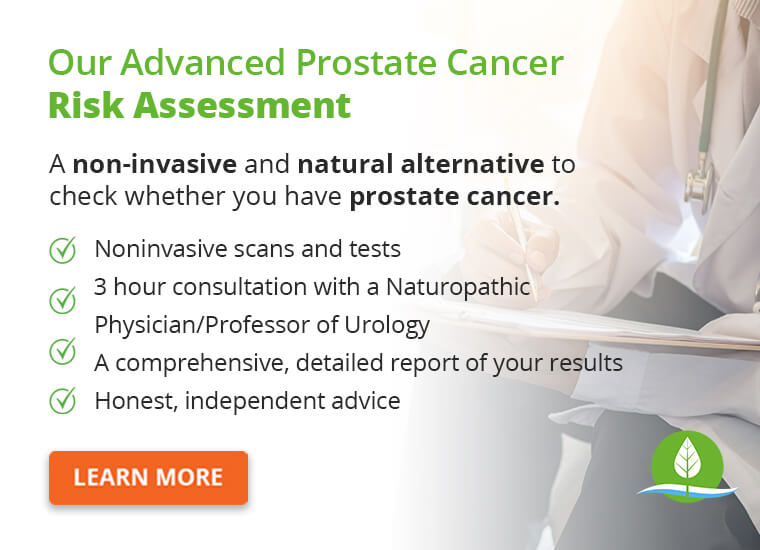- What does watchful waiting mean?
- What is watchful waiting’s role in the treatment of certain kinds of prostate cancer?
- Who is watchful waiting recommended for?
- How can watchful waiting help improve your health?
- Tests performed during the watch and wait period
- Benefits and risks of watchful waiting
- Conclusion
- Source
When you get a diagnosis of prostate cancer, it is normal to feel nervous and stressed about the future. But then, your doctor mentions that watchful waiting is the best option for you.
He’s prescribing tests and not giving you cancer treatment. You might wonder, is that ok?
What is watchful waiting, and when is it the best option? What should you expect if your doctor decides this treatment modality instead of aggressive cancer therapy?
What does watchful waiting mean?
First off, let us be clear about what is watchful waiting, and what to expect. Moreover, why is it considered as an option in a dangerous disease such as prostate cancer?
Watchful waiting is often called observation, and it is very similar to active surveillance. It is a less intensive approach to evaluating and treating patients with prostate cancer.
According to clinical trials, most types of prostate cancer grow very slowly. Not all of them need active treatment, especially after a given age. Thus, watchful waiting relies on tests and symptoms, and it is not invasive. Doctors will evaluate the progression of the disease and act accordingly (1).
Get Your FREE PSA Lowering Diet Plan!
- Naturally lower PSA levels
- Reduce nighttime trips to the bathroom
- Enjoy better bladder control and urine flow
What happens during watchful waiting?
During watchful waiting, you could expect to run diagnostic tests now and then. Your doctor will not give you radiation therapy or chemotherapy. If you’re on watchful waiting, chances are you are not a candidate for radical prostatectomy, either.
Instead, your treatment options are meant to control your urinary tract symptoms. It is the best approach for patients who are not candidates for aggressive treatment and do not have fast-growing cancer (1).
What is watchful waiting’s role in the treatment of certain kinds of prostate cancer?
Your doctor will probably recommend watchful waiting in the following conditions (2):
- In fragile patients who are not candidates for aggressive treatment.
- When prostate cancer is not causing alarming symptoms.
- In prostate cancer with a favorable Gleason score.
- When the tumor is small, and only located in the prostate (no prostate cancer spread).
- If your PSA levels are lower than 10 ng/ml.
In this type of prostate cancer, some clinical trials show that there is no difference in survival rate if you are performed prostatectomy or not. Thus, instead of treating cancer, doctors treat the symptoms. To watch out for any change, they maintain patients under observation.
Who is watchful waiting recommended for?
Why is it that your doctor decides not to treat cancer? Is that the right approach for you? There are solid reasons to watch and wait instead of going through surgery.
Watchful waiting may be suitable for you if your prostate cancer is not causing symptoms. The majority of cases are stage 1 and stage 2 cancer.
It is also recommended for patients with diseases that will be aggravated by other treatment options. But more importantly, it is recommended for patients with prostate cancer types that will not shorten their lives.
The primary purpose of this method is to maintain the patient’s quality of life. This is achieved by treating your prostate tumor only when it is strictly necessary (2).
At the moment of your diagnosis, your doctor will make a full assessment of your health. He might recommend watchful waiting right away, depending on the factors mentioned above.
Watchful waiting is typically recommended in older men with other health conditions. In younger patients, a similar approach would be active surveillance. The only difference between one and the other is that the latter requires more tests, and it is more open to aggressive treatment whenever it is necessary (2).

How can watchful waiting help improve your health?
According to clinical trials and medical experience, watchful waiting is a useful approach to maintain the patient’s quality of life. Using aggressive treatment is sometimes counterproductive.
It does not always increase life expectancy. Moreover, aggressive therapy may even worsen existing diseases (3). Thus, in patients with multiple health conditions and older age, watchful waiting improves their health.
It reduces the chance of complications and treats symptoms as soon as possible.
Tests performed during the watch and wait period
During the watch and wait period, you’re not meant to undergo surgery or radiation therapy. However, you will need to perform a series of tests to follow-up on your condition.
During this period, the doctor will ask for new follow-up tests every 6 to 12 months. The patient will be asked to monitor your symptoms and report any change, too.
The tumor may be changing if you start having urinary symptoms or experience sudden weight loss. Thus, it is recommended to report these symptoms regardless of the date of your next appointment.
What is the test performed during the watch and waiting period looking for?
The most important tests during the watch and wait period include (4):
- PSA test: PSA testing is an essential tool in the diagnosis and follow-up of prostate cancer. It predicts your risk and should be compared with your symptoms and other exams.
- Digital rectal examination: DRE is performed to evaluate the feel of the posterior part of the prostate. Cancer is usually located in this area and felt as prostate nodules.
- Prostate biopsies: They may not be required in your case. Your doctor might ask for a biopsy in case you have alarm signs and symptoms.
- Urine tests: They are useful if you start having urinary symptoms. Urinary tests rule out infections and other causes of urinary tract symptoms.
- Other blood tests: Depending on your condition, doctors may also require other blood tests. They are probably looking for anemia and other common problems of chronic disease.
Why will you have medical tests performed during the watch and wait period?
Medical tests performed during the watch and wait period are aimed at detecting any change in prostate cancer. It is recommended in slow-progressing cancer. But the characteristics of a tumor can change over time.
Thus, medical tests and follow-up are important to evaluate the progression of the disease. Depending on each case, we can also consider various treatment options. The majority of them are aimed at reducing the symptoms, and not necessarily at curing cancer.
Benefits and risks of watchful waiting
Every decision we make comes with benefits and risks. The same thing goes with treatment options such as radical prostatectomy or watchful waiting. So, let us evaluate the advantages and disadvantages of this approach. Moreover, is there a way to mitigate the risks?
What are the advantages of watchful waiting?
Watchful waiting is recommended in cases of localized prostate cancer because it offers the following benefits (5):
- Patients with other health conditions are not aggravated by the side effects of radiation therapy and similar treatments.
- The prostate biopsy is not a routine exam.
- It is a useful way of monitoring prostate cancer symptoms and provides early treatment.
- It reduces stress levels in men and may improve their quality of life.
- Most men realize after a while; they don’t really need any treatment to stay safe.
What do you risk with watchful waiting?
But regardless of your Gleason score, and your prognosis, there are some risks you need to be aware of (6):
- There’s always a chance that the characteristics of cancer change, and it starts to grow.
- It can be a source of distress for men who feel they should get aggressive prostate cancer treatment instead.
- The stress and concern are share and fed by family members who think surgery is the best option.
- Keep in mind there’s always a relative risk. Thus, doctors make decisions based on a balance between benefits and risk. The majority of cases of prostate cancer do not grow rapidly. But others may change their phenotype and become aggressive. That’s why active surveillance is what stays between aggressive treatment and watchful waiting. It is another option for healthier or younger patients, candidates for prostatectomy.
Conclusion
Primary care physicians, patients, and their family members should do their part to mitigate the risks. Doctors should stay alert and program follow-ups according to the risks. They should order the right exams at the right moment.
Patients with a prostate cancer diagnosis should be aware of urinary signs and symptoms. They should report any change right away without delay.
This is very important to start early treatment and detect aggressive cancer. And both patients and family members should get acquainted with watchful waiting statistics.
Understanding how it works will ease their concerns and reduce the levels of stress, which may even contribute to the progression of cancer.






